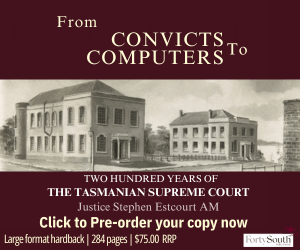A 16-year-old North Queensland First Nations boy repeatedly exposed to youth detention over a five-year period seriously assaulted a custodial officer in response to being awoken by someone repeatedly “flicking” his cell light on and off.
Mount Isa Childrens Court Magistrate Eion Mac Giolla Ri last week detailed a series of events which led to a boy – given the pseudonym John Goodall – seriously assaulting a custodial office at Townsville’s Cleveland Youth Detention on 17 August 2022.
Goodall pleaded guilty to the offence, but details provided to the court at his sentencing last Tuesday (6 December) reveal that the incident occurred after he was inexplicably woken by someone repeatedly turning his cell light on and off.
A court-ordered pre-sentence report, prepared by a Youth Justice case worker, provided significant insight into John Goodall’s behaviour and reasons for it, including his life-long exposure to violence, an unstable home environment, malnutrition and physical abuse.
The case worker also noted: “John had a profoundly prejudicial upbringing during which he experienced … exposure to server violence … (and) serious substance abuse by his parents”.
The report also said the teen was exposed to Child Safety intervention from the age of four and unstable foster care and residential homes between the ages of seven and nine.
“John Goodall is a 16-year-old Aboriginal boy who has exponentially been exposed to youth detention conditions since he was 11 years of age and has spent a large proportion of his adolescence in custody,” Mr Mac Giolla Ri noted in his sentencing remarks.
“At around 4.45pm on 17 August 2022 John was sleeping in his cell. The complainant (detention) officer began to continuously flick the light in John’s cell on and off in order to wake John.
“It is not clear from the material (before the court) why John could not sleep at that time. John became agitated by the continuous flicking.
“In response, John placed his mattress against the glass in his cell door in order to block the officer’s view of him. It appears that John was aware from prior experience that by doing so officers within the centre would be compelled to respond because of the risk that blocking the glass might be a precursor to self-harm or damaging his cell.
“John expected a conversation through the door with the officer, inferentially to get the officer to stop flicking the lights.
“John advised the officer that he had a cup of urine and that if the officer entered the cell John would pour the urine on him. John expected the officer to attempt to de-escalate the situation but the officer entered the cell. John poured the urine on him.”
The court was told John Goodall endured a “prejudicial upbringing” which had inhibited his physical and mental development; and as a consequence diminished his ability to emotionally regulate, understand situations from another person’s perspective, trust authority figures and understand and resolve conflict appropriately.
“(Neither can he) understand that bad decisions can lead to bad consequences and conversely, that good decisions can lead to good consequences,” Mr Mac Giolla Ri said.
“John has experienced imprisonment since he was 11 years of age and has been imprisoned for a large proportion of his adolescence. The length of his imprisonment has led to an over familiarisation and desensitisation to prison.
“John has a deeply ingrained sense that he is treated differently (worse) than other prisoners … (and) believes that some staff target him to elicit behavioural reactions from him.
“The case worker’s view is that John’s cognitive distortions of officers’ perceptions of him limited the way John could respond to the complainant officer.
“It is also quite likely that John’s history of assaults on detention staff means that detention staff do, in fact, treat him differently.”
Taking into consideration all the mitigating features, Mr Mac Giolla Ri said it was appropriate in the circumstances to sentence John Goodall to a restorative justice order.
Restorative justice orders made under section 162 of the Youth Justice Act 1992 involve conferencing between offenders and victims for offences committed by children and is an internationally recognised evidence-based response to criminal behaviour.
Mr Mac Giolla Ri, in an eight-page decision published on Friday, said: “A restorative justice process would ensure John is held accountable for his actions in a safe and supportive environment.
“It would attempt to raise awareness of the range of emotions faced and consequences experienced by the victims.
“The possibility and procedure of engaging in a restorative justice process was discussed at length and John made enquiries as to what would be involved.
“John has a firm understanding that the process would involve engaging in open conversation with the custodial officer involved.”
Read the decision.







Share this article